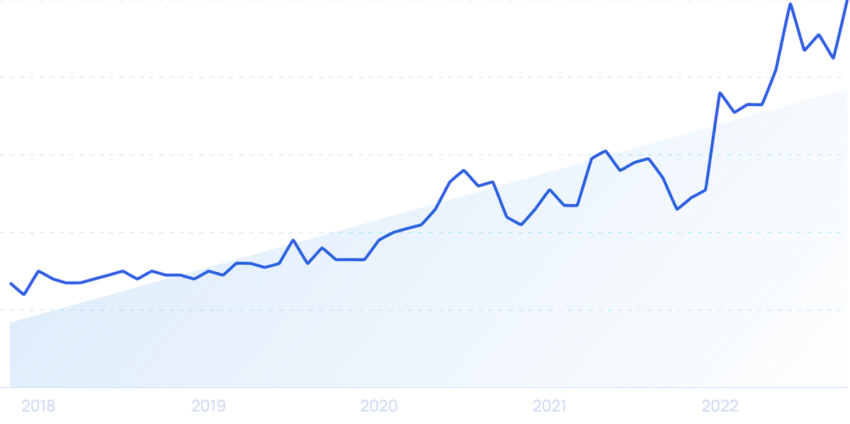TL;DR Summary of Top Business Trends to Watch in 2025 and Beyond
Optimixed’s Overview: Emerging Business Innovations Shaping the Market Landscape in 2025
Generative AI Enhances Productivity and Customer Engagement
Generative AI, powered by advanced large language models, is rapidly transforming business operations. Valued at approximately $60 billion, this technology boosts employee productivity and offers versatile applications including content generation, coding assistance, and customer interaction automation. With 98% of executives planning to integrate AI solutions within five years, sectors like healthcare and software development are already benefiting from synthetic data generation and AI-powered coding tools such as Github Copilot and Cursor AI. Additionally, advertising is set to leverage generative AI for creating dynamic, personalized ads.
Continued Expansion of E-Commerce and Digital Sales Channels
Post-pandemic e-commerce growth remains robust, contributing to over 22% of retail sales in 2023 and projected to reach $8.1 trillion by 2026. Major brands are innovating with direct-to-consumer digital offerings and subscription-based commerce models, exemplified by Disney’s integration of exclusive merchandise on its Disney+ platform. Retail categories such as electronics and home furnishings continue to see notable online revenue gains, while businesses increasingly refine marketing strategies to capture expanding online consumer activity.
5G Drives Next-Level Connectivity and Data Utilization
The rapid deployment of 5G networks in leading countries like the US and China facilitates ultra-fast, reliable data transmission with sub-10ms latency. This infrastructure supports enhanced IoT applications, remote medical services, and industrial automation. Companies such as BMW and T-Mobile are pioneering 5G utilization for real-time asset tracking and telemedicine. Agricultural technology is also poised to benefit through sensor networks and connected devices that optimize production and livestock management.
Workforce Trends: Remote and Hybrid Models Gain Traction
Remote and hybrid work arrangements have solidified their presence, with a significant portion of the workforce preferring flexible schedules. Despite employer concerns about productivity, many employees express willingness to accept reduced pay for continued flexibility. This shift is driving increased adoption of employee monitoring technologies. The trend also influences hiring practices, with remote recruitment growing steadily.
Social Media and Commerce Integration Accelerates
Social media marketing investment continues its upward trajectory, fueled by platforms like TikTok that deliver highly memorable ad experiences. The rise of social commerce—combining shopping with social networking—is expected to triple traditional e-commerce growth rates, particularly in fashion, electronics, and home decor. Brands are emphasizing community-building and leveraging micro-influencers to enhance engagement and conversion rates.
Sustainability as a Core Business Strategy
Consumer demand for sustainable products drives companies to improve environmental, social, and governance (ESG) practices. Although measurable financial returns from these efforts are still emerging, customer loyalty benefits are evident. Circular economy initiatives, such as Teemill’s print-on-demand and recycling model, demonstrate innovative approaches to reducing waste and closing resource loops, with significant potential savings globally.
Immersive Technologies Redefine Customer Interaction and Employee Training
Augmented, virtual, and mixed reality technologies are gaining traction, with the market forecasted to grow nearly tenfold by 2028. Consumers increasingly use AR/VR to try products virtually, boosting engagement and purchase likelihood. Companies like Pinterest and Duolingo are integrating immersive experiences to enhance shopping and learning. Enterprise investments in immersive training and industrial maintenance are also expanding rapidly.
Innovations in Last-Mile Delivery Optimize Supply Chains
Last-mile delivery, a significant cost driver in supply chains, is under transformation through AI-enabled route optimization and emerging drone delivery services. Early FAA approvals for drone deliveries by companies such as Amazon and Wing suggest growing adoption. These technologies aim to meet consumer expectations for faster shipping while reducing operational costs and environmental impact.
AI-Powered Customer Service Improves Efficiency and Satisfaction
Artificial intelligence is increasingly deployed to automate customer support tasks, resulting in substantial cost savings and enhanced customer satisfaction. Companies implementing AI chatbots and virtual agents report reduced wait times and higher engagement rates. The growing investment in conversational AI technologies underscores their role in improving the customer experience and operational efficiency.
Conclusion
From AI-driven productivity gains and 5G-enabled connectivity to sustainability initiatives and immersive technologies, these business trends are shaping a dynamic landscape for 2025 and beyond. Organizations that strategically adopt and innovate within these areas are positioned to achieve competitive advantage and meet evolving consumer expectations.
